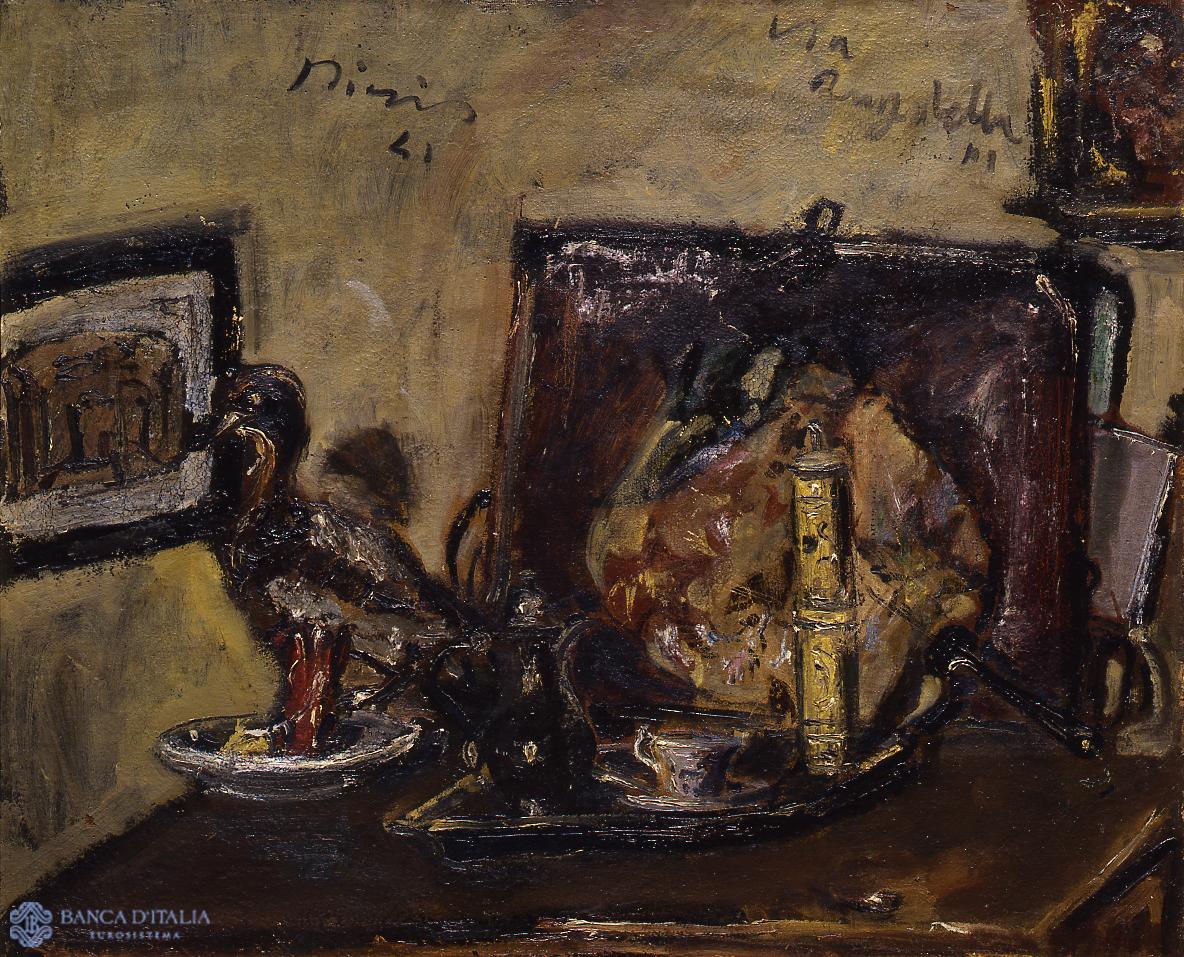In a space that is almost entirely absorbed by the foreground is a crowded still life: a tray, a pitcher, a cup, a fan, several more trays, a small picture hanging on the wall; and a small ceramic bird that looks alive and almost offended by the pose it has been assigned. Higher up, wandering in the shallow background is the signature, date and place where the canvas was painted: “Via Rubabella”, the address of De Pisis’s new house in Milan, where he had moved on returning to Italy from Paris, immediately prior to the outbreak of the War.
The work marked an important step forward for De Pisis: so much so that he sent it to the room dedicated to his work in the Venice Biennale in 1942. The material is overloaded, almost oppressive; the colour is thick, muddy. The image could not be further removed from the airy lightness of touch with which De Pisis’s stenographic technique punctuated his last paintings in Paris. After a series of magnificent, dramatic nude drawings that can be dated to 1940, the “marchesino pittore” indulged this hoarser, more engaged voice: perhaps it was his way of recording the malaise of a war on which he turned his back for years, as though he did not want to acknowledge the tragedy; a tragedy that would ultimately catch up with him, however, when his own house and studio were bombed.
Filippo De Pisis, Natura morta romantica
Natura morta romantica
Painting
20th century AD
Still life

Artist
Date
1941
Material and technique
Oil on canvas
Measurements
79,5 x 98 cm
Compiler
Fabrizio D'Amico
